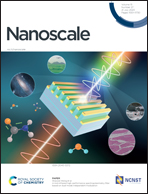Recent advances in metal–organic framework/carbon nanotube nanocomposites for developing analytical applications†
Abstract
Nanoscience shows promise for scientific advancement in many sectors, such as biology, energy, materials, environment, and manufacturing. Nanocomposites are mixtures of two or more materials, one of which is nanosized particles. The composites are expected to show combined features resulting in general enhancements in their physical and chemical properties. Metal–organic frameworks (MOFs) are coordination polymers that have attracted attention from researchers in recent years due to their porosity and controllable functionality. Another example of interesting nanomaterials is carbon nanotubes (CNTs) which are also known for their mechanical and thermal properties. Incorporation of both these materials into a nanocomposite has shown an enhancement in properties and conquered challenges in the defects of construction. This mini-review sheds light on the recent synthetic approaches and characterization of MOF–CNT nanocomposites in order to access porous selective nanocomposites that can improve analyte detection in environmental matrixes and biological systems. A summary of the chemical composition of nanocomposites, analytes in the target, and analytical techniques used is provided.

- This article is part of the themed collections: Nanoscale and Nanoscale Horizons: Carbon-based nanomaterials and Recent Review Articles


 Please wait while we load your content...
Please wait while we load your content...